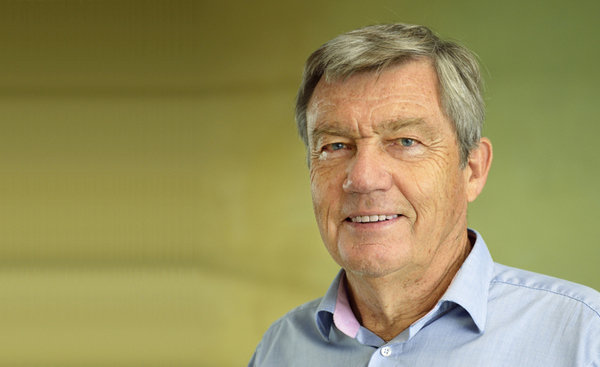
Helmuth Möhwald died on 27th of March 2018 at the age of 72 after a brief serious illness. With him, the colloid science community is losing a very well-known and influential scientist. During his PhD thesis (University Göttingen, 1974), postdoc time (IBM San Jose) and habilitation in Physics (University Ulm, 1978) Helmuth Möhwald managed to grow sufficiently pure organic charge-transfer crystals that intrinsic properties could be derived. After four years in industry dealing with such complex systems as lubrication in space (Dornier-System, Friedrichshafen, Germany) he got his first professorship at TU Munich in 1981.
In 1987 he was appointed to a full professorship at Mainz University. During this time he and his team organized the ECIS conferences in 1991. After the German unification Helmuth Möhwald started together with two younger colleagues (M. Antonietti, R. Lipowsky) to build-up the first Max Planck Institute in former Eastern Germany. In 2003, he was president of ECIS. Between 1998 and 2006, he guided from the German side the French-German network “complex systems in dimensions two and one half” that allowed more than twenty French and German young academics to start there career before becoming tenure. This first network of its kind working on foundation principle as “common shared open space lab” has been copied in more than twenty similar binational action called LIA (Laboratoire International Associé).
© Max-Planck-Institut für Kolloid- und Grenzflächenforschung (Anne Heinlein)
Helmuth Möhwald introduced fluorescence microscopy as a tool to study amphiphilic monolayers at liquid surfaces and interfaces. He showed that there are pressure regions of coexisting phases thus proving the existence of first order phase transitions in 2D. Very peculiar domain shapes and patterns were observed and explained by nucleation and growth combined to long range electrostatic forces due to alignment of molecular dipoles along domain borders. To study the structure of ordered phases Helmuth Möhwald introduced grazing incidence X-Ray diffraction at liquid surfaces, and was key actor in introducing this technique on synchrotrons, including ESRF.
Furthermore Helmuth Möhwald developed alternatives to the well-known Langmuir-Blodgett technique to prepare ultrathin organized organic films. The most successful achievement was designing films by alternating adsorption of oppositely charged polyelectrolytes, particles, proteins or other multiply charged molecules (LbL technique) with his habilitant Gero Decher. Helmuth Möhwald converted the LbL technique to coat sacrificial colloidal particles. Lbl science and technique has encountered an explosion of activities world-wide because of its versatility, ease and application perspectives (drug delivery systems, anti-corrosives, etc.).
After his official retirement in 2014 he was still active and was a consultant for the department of Biomaterials of the MPI-KG in Golm/Potsdam as well as for the Jilin University in Changchun (China). Helmuth Möhwald was still in full steam scientific activity as editor of ACS-nano, also working on recycling of windmill magnets using advanced colloidal techniques within the ERC “REE-CYCLE” in Marcoule. Helmuth’s last paper in this direction -submitted only a few weeks ago- is about intensification of hydrated rare earth cations phase transfer by ultra-sound. He was intensely cooperating with many of his former co-workers and thus remained a most valuable mentor.
Helmuth Möhwald participated to nearly twenty ECIS conferences since 1990. His scientific curiosity was obvious and his non-conventional way of thinking has always been fascinating. The discussions with Helmuth Möhwald – Overbeek medalist of ECIS society in Geneva (2007) – are still inspiring scientific work in progress that will be discussed in Ljubljana in September 2018.
Helmuth’s big achievement for the ECIS was the unification of ECIS and ECIC member list and also merging the two – formerly distinct – annual meetings of these two societies, thus becoming the major non-commercial event for nanoscience outside electronics and photonics in Europe. He had full backup with this major achievement of Hans Lyklema himself, as well as the active treasurers like Michal Borkovec and many others. In recognition of his excellent activity, Langmuir published a virtual issue of the journal that is freely available at this link.
